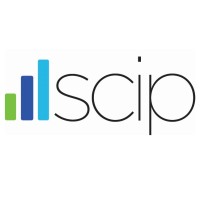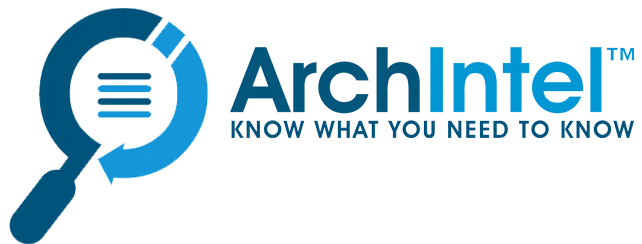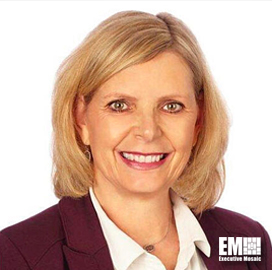Laurie Young, director of Competitive Intelligence with Lone Star Analysis, recently spoke with ArchIntel regarding how competitive intelligence has changed with the emergence of new technologies, how to manage customers’ needs and strategies, as well as building partnerships and customer relationships in the marketplace. Young also discussed how she measures success and drafts effective competitive intelligence reports.
“The purpose of competitive intelligence is to provide a view of the competitive field, to understand the tools, bidding behavior and resources. Market intelligence is a part of competitive intelligence because you have to understand the market that you’re working in, the barriers to entry, the technologies, the players and the customers.”
ArchIntel: How do you measure success within competitive intelligence?
 “In terms of success, we want to help our client make winning decisions, and in turn, make money. Our clients’ success is how we measure our success. We also consider a program successful if we help our client make an early decision to not bid, thus saving them B and P money. They can then allocate those funds where they have a better chance of winning.
“In terms of success, we want to help our client make winning decisions, and in turn, make money. Our clients’ success is how we measure our success. We also consider a program successful if we help our client make an early decision to not bid, thus saving them B and P money. They can then allocate those funds where they have a better chance of winning.
I also see success as developing a trusted relationship with our clients so that, when we give them information and a recommendation, they know that we’re coming from a base of data and not emotion or conjecture, and we take the bias out of the work we provide.
In addition, success is saving our client time by doing things that they can’t do. For example, continuous monitoring of competitors. If they don’t have the resources, skill set or the manpower to do that, we can efficiently monitor those competitors and provide valuable information back to our clients.”
ArchIntel: How do you build trust in your relationship with clients?
“With a brand-new client, and with all of our clients, we work very closely to give them an understanding of our processes, our tools and how we go about our business. We ask that they have frequent interactions with us so that we can share our progress and ensure that we’re aligned with their expectations.
We ask that they share with us what they know, so that we don’t “reinvent the wheel” and we’re very transparent in all our data and assumptions. We work hard to build our relationships on trust we don’t view these as “transactions.”
We learn our customers’ language. Some customers may ask us to deliver our products in their templates and their formats because it’s easier for them. We have projects where we do a very large study, then filter that data into a concise executive brief. Communication is critical. You have to ask the questions. You have to be ready to listen to what the client wants and what they say.”
ArchIntel: What are some of the common needs of your customers?
“Customers don’t want to be surprised. They want us to provide advanced warning of something that could greatly impact their company. Defense contractors are very interested in what’s going on with government acquisitions, and what’s happening on the ground.
They’re interested in potential teaming situations that could impact them and they are always watching for mergers and acquisitions (M&A) that would strengthen a competitor and or change the landscape.
They’re also focused on leadership changes, and how that impacts bid behavior, as well as strategic hires.”
ArchIntel: What are some of the challenges of implementing a competitive intelligence unit?
“If you’re implementing competitive intelligence for the first time, you have to be very clear about definitions and priorities. It’s helpful if you have a champion. It is very difficult to succeed without a champion, or someone to help you navigate the needs of your internal customers.
A champion, or advocate, believes in the value of what competitive intelligence can bring, allocates resources (manpower or funding) and provides guidance and help with prioritization. I’ve mentored many young professionals who start out their CI careers as “one-man bands.” Once awareness of their capabilities and value becomes known, they can be inundated with requests. They need leadership to help prioritize and set realistic expectations.
 Understanding the fundamental principles and tools of competitive intelligence provides a basis for understanding as you begin a competitive intelligence career.
Understanding the fundamental principles and tools of competitive intelligence provides a basis for understanding as you begin a competitive intelligence career.
SCIP (Strategy and Competitive Intelligence Professionals) provides a base of fundamental understanding of competitive intelligence principles from both an academic and a practical perspective. SCIP provides clear ethical guidelines, which are critical in the competitive intelligence world.
Having that support is helpful. It’s a network of people with experience doing competitive intelligence. This can help new professionals and new teams avoid common mistakes and take advantage of best practices.”
ArchIntel: What are some of the ethical challenges you face with data collection?
“One challenge is to avoid COI (conflict of interest). That is a situation where someone knows too much (they are “too close”) so you must be very careful of the interactions you have. At a conference, you must identify who you are, and never misrepresent yourself.
In the competitive intelligence world, you must represent yourself and your information accurately. You must be careful to avoid disinformation and misinformation. Behaving in an ethical manner means that you’re going to be honest.
I work for a highly ethical company, so our reputation is everything to us. You don’t cheat occasionally. You simply NEVER cheat. Our philosophy is: “If something’s even close to the line, we don’t go there.”
ArchIntel: How do you ensure that your data is accurate?
“My background is in the Intelligence Community. There’s a rule of three that we use: you want three independent sources giving you the same information. The analyst must verify the sources are independent.
If you have three independent data points that validate your assumptions, then we conclude that something is “highly likely.” We’re very careful with that rule. If we get one data point, we will share it with a client, but we’ll tell them that we only have one data point that hasn’t been validated. One data point – combined with what the client already knows, can be the final puzzle piece.
Our client will ask us to give them our best analysis based on what data we have in hand. They understand that we can’t always provide certainty. We provide our analysis based on the available data and make sure our assumptions are transparent.”
ArchIntel: What are the critical points to include in a competitive intelligence report?
“Depending on your task, our analysis will answer the customers’ questions, which are almost always who, what, where, when, how and why. We focus on why initially to better understand the needs of our clients.
What is the marketplace? What’s going on? Who’s involved? What are they doing? How are they doing it? If schedule is important, we ask, when are they doing something and how does that impact our client? Our goal is to provide insight so that our customer can make a “winning decision.”
A poor competitive intelligence report has no insight whatsoever. It is full of copy and pasted data. Sometimes, that may be what the client actually wants. They may want to take the data themselves and do the analysis themselves. But from my standpoint, we are hired to provide expert analysis and for our ability to put the puzzle pieces together and tell the story. We also bring an unbiased look at the situation. “We are not drinking the Kool-Aid.”
ArchIntel: What are some of the changes you’ve seen in your experience with competitive intelligence?
“The biggest change I’ve seen is the introduction of social media. I view this as negative, because it is common for some to claim they are “an expert,” but of course we all know not everything on the internet is factual. The emphasis and understanding of ethics have become even more important.
 Within big corporations, there is an increased awareness of the value of competitive intelligence. A competitive intelligence group or program still doesn’t fit neatly under business development, strategy or sales because competitive intelligence touches all of those divisions. There is still the question of the “best fit” for the program.
Within big corporations, there is an increased awareness of the value of competitive intelligence. A competitive intelligence group or program still doesn’t fit neatly under business development, strategy or sales because competitive intelligence touches all of those divisions. There is still the question of the “best fit” for the program.
I believe you can instill a culture of “everyone does competitive intelligence” in your company. My motto is: “information is power, but only if you share it. “
Everyone can be a collector. People who are attending conferences, industry days, customer meetings, (virtual webinars) constantly hear and see changes. I try to foster a culture of inquisitiveness and sharing.”
ArchIntel: How have some of the technology advances changed competitive intelligence?
“In technology, artificial intelligence (AI) and machine learning (ML) are the latest buzz words. People are still trying to figure out how they apply to competitive intelligence and in the world that we live in.
The defense industry is still trying to define “AI” and understand the value and implications.
New technologies and tools are available to aid in research efficiency and data aggregation. Platforms for collecting and sharing data are now easily identified.”

